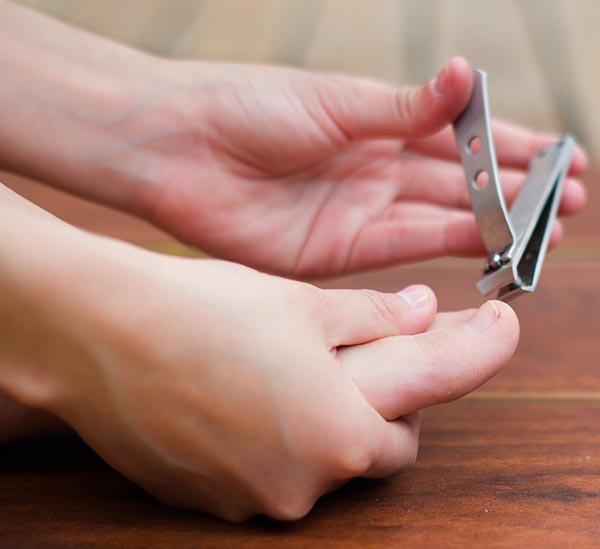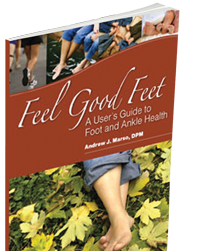Finding Relief from Ingrown Toenail Pain
Before we look at treatment and preventative options, let’s start with looking at why treating an ingrown toenail is so important. Obviously, the pain and discomfort caused by a nail that has become ingrown is a key reason patients want the condition addressed. The good news in this regard is the fact there are several different ways for you to find relief from painful symptoms.
Beyond pain and discomfort, however, an ingrown toenail also puts you at higher risk for a potential infection. When the ingrown edge digs into the skin flanking the nail, it creates an opening for microorganisms—including bacteria, fungus, and viruses—to enter the body. Infections caused by these microorganisms are certainly undesirable for otherwise healthy individuals, but they are especially dangerous for those who have medical conditions that compromise the body’s immune system, like diabetes.
Conservative Ingrown Toenail Treatment
With regards to ingrown toenail treatment, Dr. Marso will start by assessing your particular situation to determine the best possible course of action. Not all cases of ingrown toenails are alike in their severity and root causes. Knowing these factors—and other considerations (such as if you are diabetic or if the ingrown condition is recurrent)—will be used to establish your treatment plan. In mild cases, especially those that are caught at an early stage, you may wish to try caring for the condition at home by soaking the foot to soften the nail and then gently lifting the ingrown edge. Placing a bit of clean, waxed dental floss under the edge will encourage the toenail to grow above—and not into—the skin, as it should. Antibiotic ointment or cream, along with a fresh bandage, can reduce infection risk. If you are reluctant to try handling the problem on your own, or have been unsuccessful in attempts to do so, you should come see us at Wisconsin Foot Center for professional care. When the condition is caught early and there is no severe pain or sign of infection, we can trim the nail and keep it at a position where it’s comfortable for you. Following conservative treatment, whether at home or in our office, it is usually recommended that you switch to either open-toed shoes or supportive sandals (not flip-flops) to keep pressure off the affected toe while it heals. Naturally, this will depend a bit on seasonal considerations. In colder weather, you would likely rather wear shoes with wide, deep toe boxes, instead of footwear that exposes your toes to the elements. To address pain caused by an ingrown nail, Dr. Marso may prescribe or recommend medication, including over-the-counter varieties like acetaminophen, ibuprofen, or naproxen sodium. As always, be sure to check with our office if you have any questions or concerns about this. We can make sure you are taking the right dosage.Permanent Nail Removal Services
Now, some cases do require more than conservative treatment. In these instances—and especially when a toenail repeatedly becomes ingrown—Dr. Marso might recommend removal of either a portion or the entire affected nail. When the entire toenail needs to be removed, it is often best practice to make this a permanent condition. This is typically done by using a chemical to destroy the nail matrix, which keeps the toenail from growing back. It might sound as though removing a toenail will be painful, but this is not the case. Anesthesia will be used to numb the area prior to the procedure.
How to Prevent an Ingrown Toenail
The best form of treatment for any medical issue—including ingrown toenails—is to take measures to prevent it from happening in the first place. With regards to ingrown toenail prevention, you should consider using the following practices:- Clip your toenails the right way. Too often, toenails that are rounded off and clipped too short become ingrown. Instead, trim your nails straight across and keep them roughly even with the edge of your toes.
- Always wear shoes that fit properly. There should always be about a thumb’s width of space between the front of the shoe and your longest toe, and you should be able to wiggle your toes freely. If these aren’t applying to the shoes you’re wearing, pick another pair.
- Protect your feet. If you need to move heavy objects on a frequent basis for your job, be sure to protect your feet with (well-fitting!) steel-toed work boots or safety shoes.
- Ask for help. When you have to move something heavy at home, ask a friend or loved one to help you. This lowers your odds of sustaining a crushed foot, which could lead to an ingrown toenail.
Speaking of “ask for help,” don’t ever hesitate to reach out to our team here at Wisconsin Foot Center whenever you need professional foot care. We provide professional treatment and services for a wide range of lower limb problems, so contact us today and find out what we can do for you. Give our Hales Corners, WI office a call at (414) 425-8400 or connect with us online right now.
"Feel Good Feet: A User's Guide to Foot & Ankle Health"

© Wisconsin Foot Center. All Rights Reserved. Website & Marketing By Podiatry Growth

